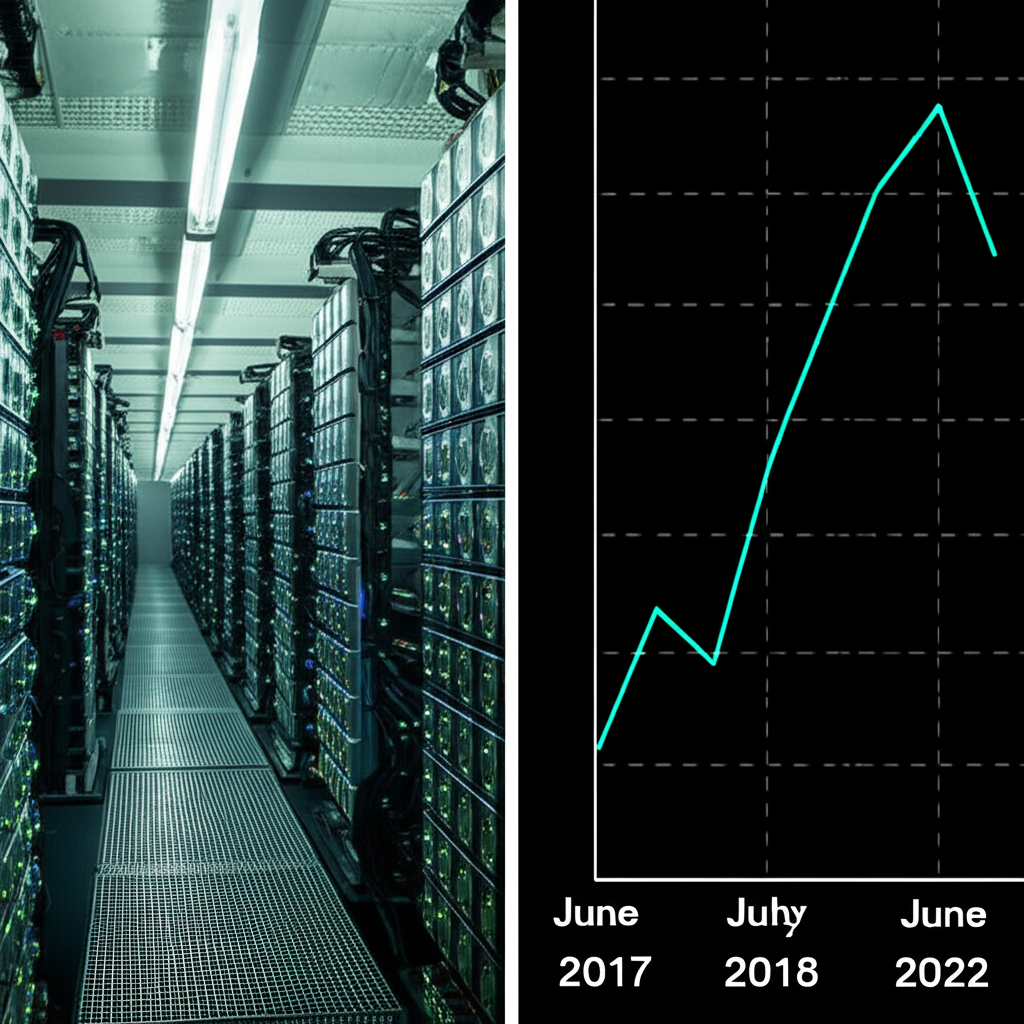Bitcoin Mining Slumps in June: Power Cuts and Weather Take Their Toll
The Bitcoin mining industry experienced a significant dip in production during June, according to recent reports. This downturn, primarily attributed to power curtailments and adverse weather conditions, highlights the ongoing challenges faced by miners in balancing profitability with environmental and infrastructural limitations.
Texas Power Curtailments Hit Hard
The impact was most keenly felt in Texas, a major hub for Bitcoin mining due to its relatively low energy costs. Miners in the state strategically reduced their operations to avoid incurring hefty peak demand charges imposed by electricity providers. This proactive measure, although impacting short-term production, demonstrates a focus on long-term cost efficiency. While precise figures on the production decrease aren’t yet publicly available, it’s estimated that the reduction in mining activity was substantial enough to cause a noticeable impact on the overall network hash rate. This strategy reflects a growing awareness among large-scale mining operations of the need to manage energy consumption proactively. Further research is needed to quantify the exact extent of the decrease in mining activity.
The Price of Energy Efficiency
This decision underscores the complex interplay between energy costs and mining profitability. While Texas offers relatively inexpensive energy, peak demand charges can quickly erode profit margins. By strategically curtailing operations during peak periods, miners aim to minimize these costs, ensuring long-term sustainability. This situation also highlights the inherent volatility within the Bitcoin mining industry, where external factors can significantly impact output. Analysts predict that similar strategic curtailments may occur in other regions experiencing similar energy pricing structures in the future.
Weather Woes Add to the Mix

Beyond power curtailments, adverse weather conditions in other mining regions further exacerbated the decline in Bitcoin production. Although specific details regarding the geographic location and the type of weather events affecting mining operations are limited, it’s reasonable to assume that extreme heat or storms could have damaged equipment or disrupted power supplies in various regions, leading to reduced mining capacity. This highlights the vulnerability of mining operations to unpredictable environmental factors.
The Future of Sustainable Bitcoin Mining
The June production slump serves as a stark reminder of the crucial need for sustainable and environmentally responsible Bitcoin mining practices. The industry is increasingly focusing on renewable energy sources and energy-efficient hardware to mitigate its environmental impact and reduce reliance on volatile energy markets. This move towards sustainability is not merely an ethical consideration; it also enhances the long-term economic viability of Bitcoin mining by reducing exposure to fluctuating energy prices and regulatory pressures.
Summary:
- Bitcoin mining production fell significantly in June.
- Power curtailments in Texas forced miners to strategically reduce operations to avoid peak demand charges.
- Adverse weather conditions in other regions further impacted production.
- The event highlights the need for sustainable and environmentally responsible mining practices.
- The long-term viability of Bitcoin mining depends on managing energy costs and environmental impact effectively.










